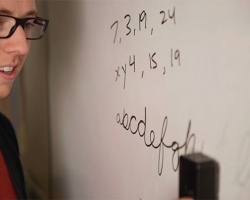Public education, like so many facets of society, is undergoing a transformation. The advent of charter schools, which are independent, publicly funded schools, has given parents new options for their children in addition to community and private institutions.
While charter operators are active in many school districts, including the Los Angeles Unified School District, Culver City has not been fertile territory for charter organizations until this year.
Last month, the Culver City Unified School District Board of Education denied the application of Building Bridges International, a charter operator that wanted set up shop with a K-8 school in Culver City. Additionally, Innovate! Charter is also considering “the Heart of Screenland” as a new home for a middle and high school.
On April 26, the board held a public hearing to gather information offered by the charter school and to hear the public’s views on the benefits or drawbacks of bringing a charter school to the city.
“We’re in a unique situation right now, because it’s the first time that we’ve had a charter school that wanted to come here,” acknowledged CCUSD Board President Scott Zeidman.
Board vice-president Karlo Silbiger, who teaches at Animo Venice High Charter School in Venice, which is operated by Green Dot Public Schools, was hoping to hear specifics from Innovate! Charter School on its curriculum, as well as from the public.
“I’ll be looking to hear what they offer that schools in Culver City don’t offer. I’ll be looking to see how successful they have been at other locations and I’ll be watching to see how much (community) support they have,” Silbiger said in an interview prior to the public hearing.
Building Bridges sought to occupy the building that formerly housed Linda Vista Elementary School in Blair Hills, but the board declined to approve its application by a 4-1 vote.
A 23-page report by the CCUSD staff concluded that Building Bridges’ petition “fails to provide a reasonably comprehensive description of all required elements of a charter petition and the petitioners are demonstrably unlikely to successfully implement the program presented in the petition.”
Homeowners in Blair Hills, like Mary Anne Greene, also questioned the potential traffic problems, due to the neighborhood’s winding streets.
Greene, the past president of the Blair Hills Homeowners Association, said similar problems that she and her neighbors had with Ohr Eliyaha Academy, a Jewish K-8 school that previously occupied the location, led them to believe that the same could happen with the charter school.
“We tried to establish a relationship with the parents and administration of Ohr Eliyaha, but they were not sensitive or responsive to our needs,” Greene said.
“Any school that comes here would bring the same problems, and none of them have approached the community [for its input].”
The board also expressed concern about a nearby gas pipeline.
Many charter organizations do not have unionized employees, but that will not be a consideration in the decision to approve or deny Innovate’s application, said Zeidman.
“There is no legal requirement that they have a union,” noted Zeidman, a labor attorney. “As a result, I cannot make it incumbent upon them to become unionized if they are not, or to have them decertify if they have a union.”
President of the Association of Classified Employees-Culver City Debbie Hamme believes that employees at all schools should have representation. “I wouldn’t want to see any group not represented when they sit down to negotiate with management,” Hamme told the News.
Given recent attempts by Republican governors in Wisconsin and Ohio to eliminate collective bargaining, Hamme said that not having union representation resonates much deeper with her and other union employees in the current political climate.
“It’s certainly more concerning to me now than before,” the association president said.
Green Dot Public Schools teachers are unionized.
Zeidman sees the beginning of charter schools’ interest in Culver City as a sign of the times. “When times are tough, a lot of new [entities] look to come to new places,” he said. “But it is unusual that we have charter schools that want to come to Culver City.”
CCUSD Superintendent Patricia Jaffe does not think any charter school, if approved by the board, would take away students from the district because of the quality of the local schools.
“I don’t see why any parent in Culver City would want to send their child to a charter when we have quality public schools here,” Jaffe said.
Zeidman agrees. “I’m for all forms of education, private, public and charter,” the board president added. “But I think that it would be unusual for a Culver City student to go to another school because of the quality of our schools.”
Zeidman pointed out that Culver City Middle School was recently named a California Distinguished School.
Greene said charter schools typically have “no vested interest” in communities where they are located because they often solicit students from many parts of the city. Charters use a lottery process to select their students, and some have been accused of cherry-picking only high-performing pupils.
“Charters are not community schools,” Greene stated.
Zeidman said Building Bridges representatives admitted to him that they would be seeking to enroll Los Angeles-area students and not Culver City residents.
Culver City will likely not be forced to deal with a situation that has arisen on some Westside community school campuses due to its student enrollment.
Colocation, a model in which a community school shares communal space with a charter school, has caused some friction with charter operators and traditional schools, and LAUSD has offered charters classroom space that the district says in not being used.
Several parent groups have asserted that LAUSD is giving away much-needed space used for laboratories, parent centers and student intervention rooms.
Since the passage of Proposition 39, a 2000 ballot initiative, it is now state law that charter schools are entitled to have equal access to community school campuses where there is low enrollment and classrooms are vacant or underutilized. Because enrollment at Culver City schools has increased or remained static, Silbiger does not anticipate a colocation situation anytime soon.
CCUSD’s enrollment numbers have remained “surprisingly resilient,” said Silbiger, whose charter high school shares a campus with Broadway Elementary School. He feels that charter schools succeed largely on their own merits and only if the community where they are located fully supports them.
“The interesting thing about charters is they are very experimental,” Silbiger said. “They work only if people want them to work.”
Officials at Innovate! Charter did not return emails or calls for comment.
The school board will consider Innovate’s petition in May.













